
Home
Biophysical Motivation
SpringSalad
Installation
Quick Start Jupyter Notebook
Tutorial: SpringSaLaD simulation
Tutorial: SpringSaLaD results analysis
Quick Start command line
Publications
About
SpringSaLaDpy: Biophysical Motivation
Biomolecular condensates are membrane-less sub-cellular compartments that play an important role in spatiotemporal regulation of cellular biochemistry. Clustering of weakly interacting multivalent biomolecules (proteins and nucleic acids) leads to condensate formation via phase transition ( Li 2012, Hyman 2014, Choi 2020). Dysregulation of condensate biology is implicated in a series of pathological conditions (Alberti 2019, Mathieu 2020, Wang 2021).
Since clustering of multivalent biomolecules underlies the condensate formation, characterizing the physical properties of these clusters has become a major aspect in recent biophysical research. For example, size and composition of the condensates have important consequences in cell signaling (Su 2016, Case 2019).
One well-characterized multivalent system is Nephrin, Nck and NWASP (Li 2012, Banjade 2014), which form large molecular complexes both in-vitro and in-vivo.
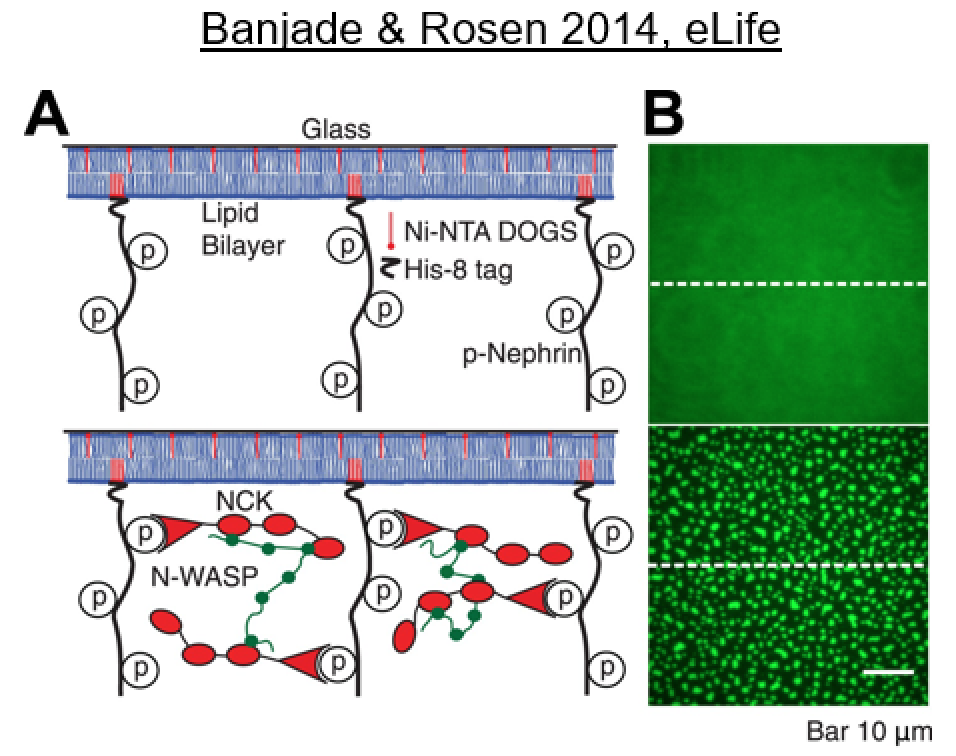
Using SpringSaLaDpy, we demonstrate the essential aspects of biomolecular clustering: the cluster size distributions, distance from the membrane, cluster size and radius of gyration over time, etc.
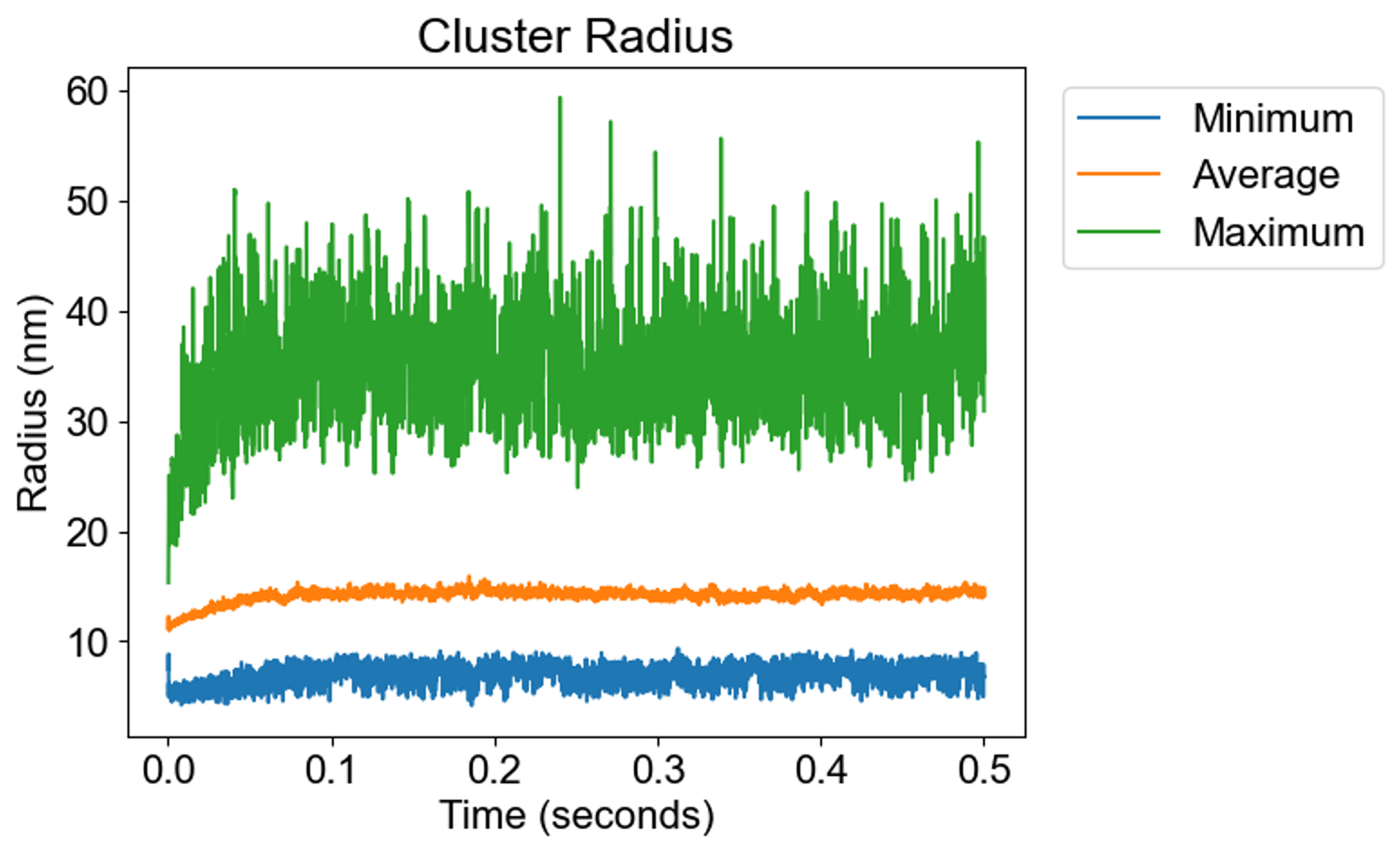 |
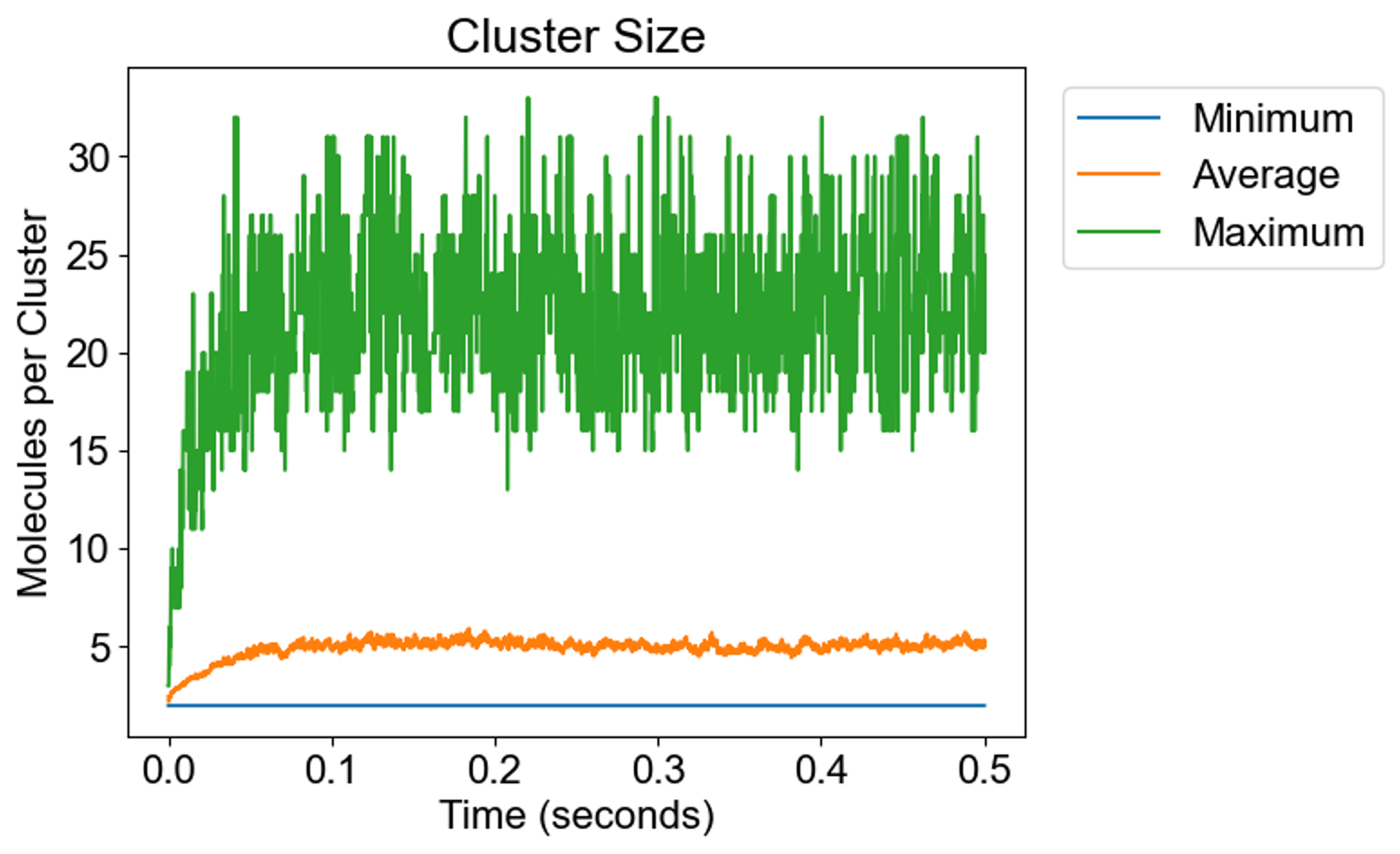 |
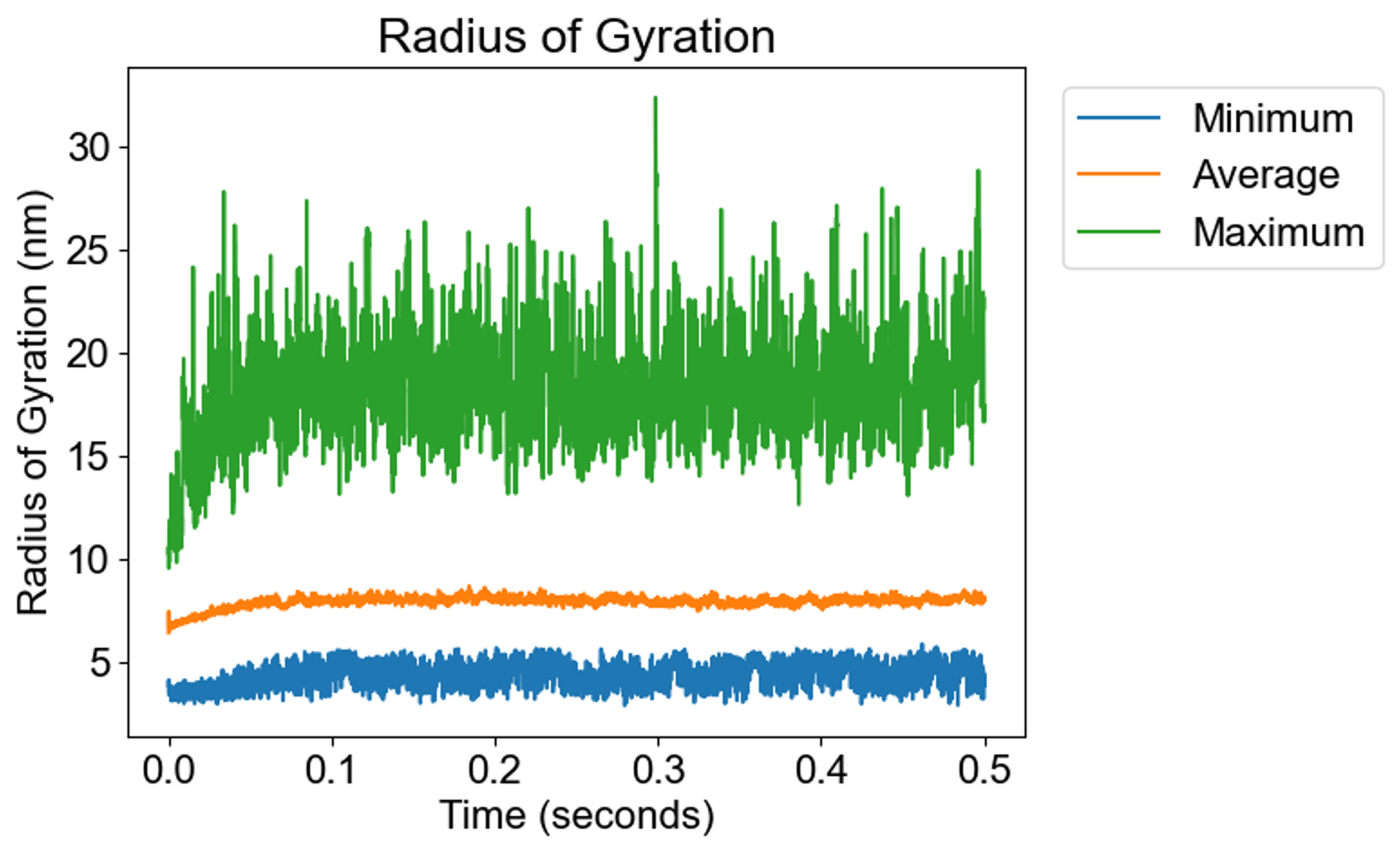 |
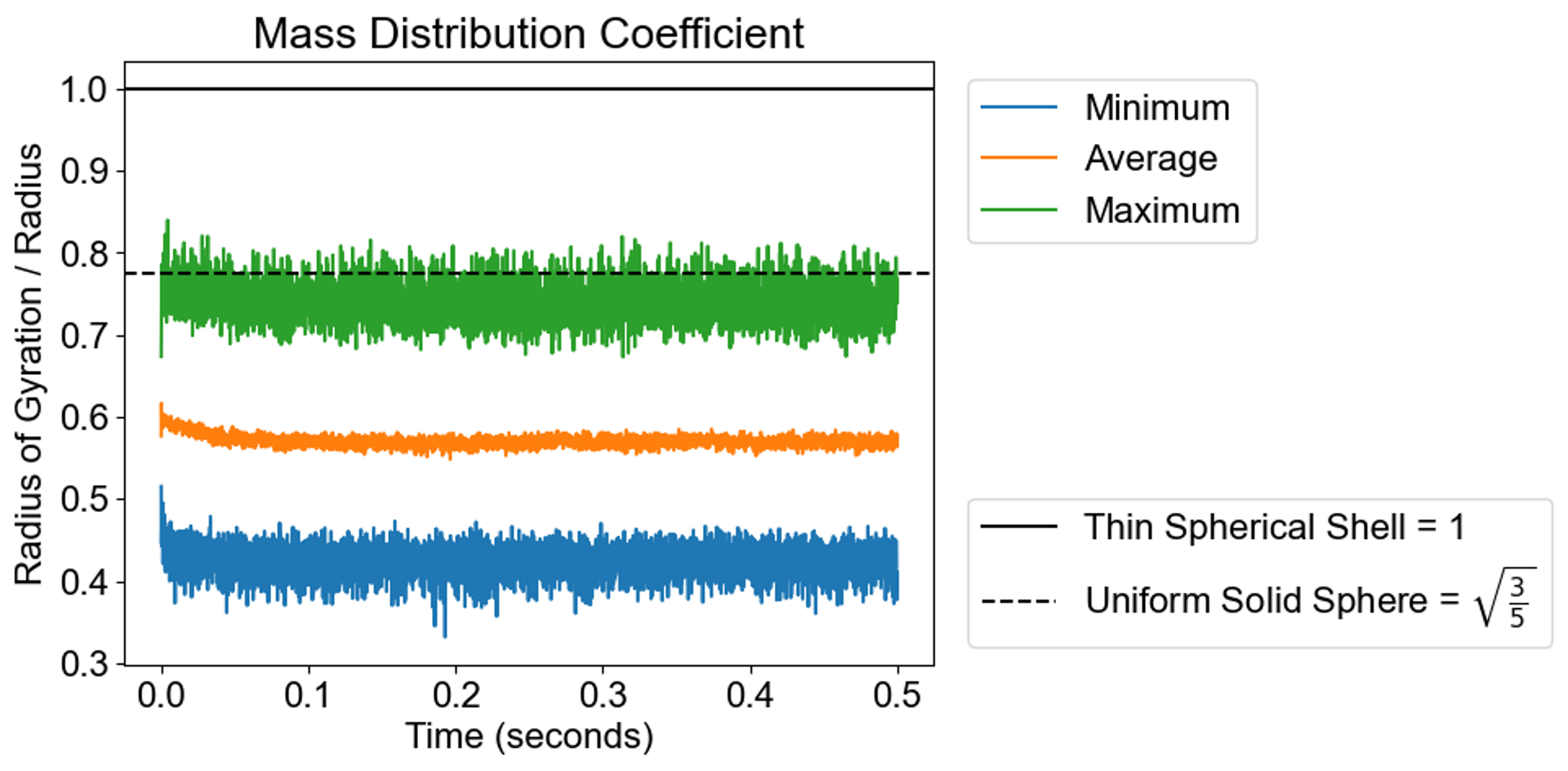 |